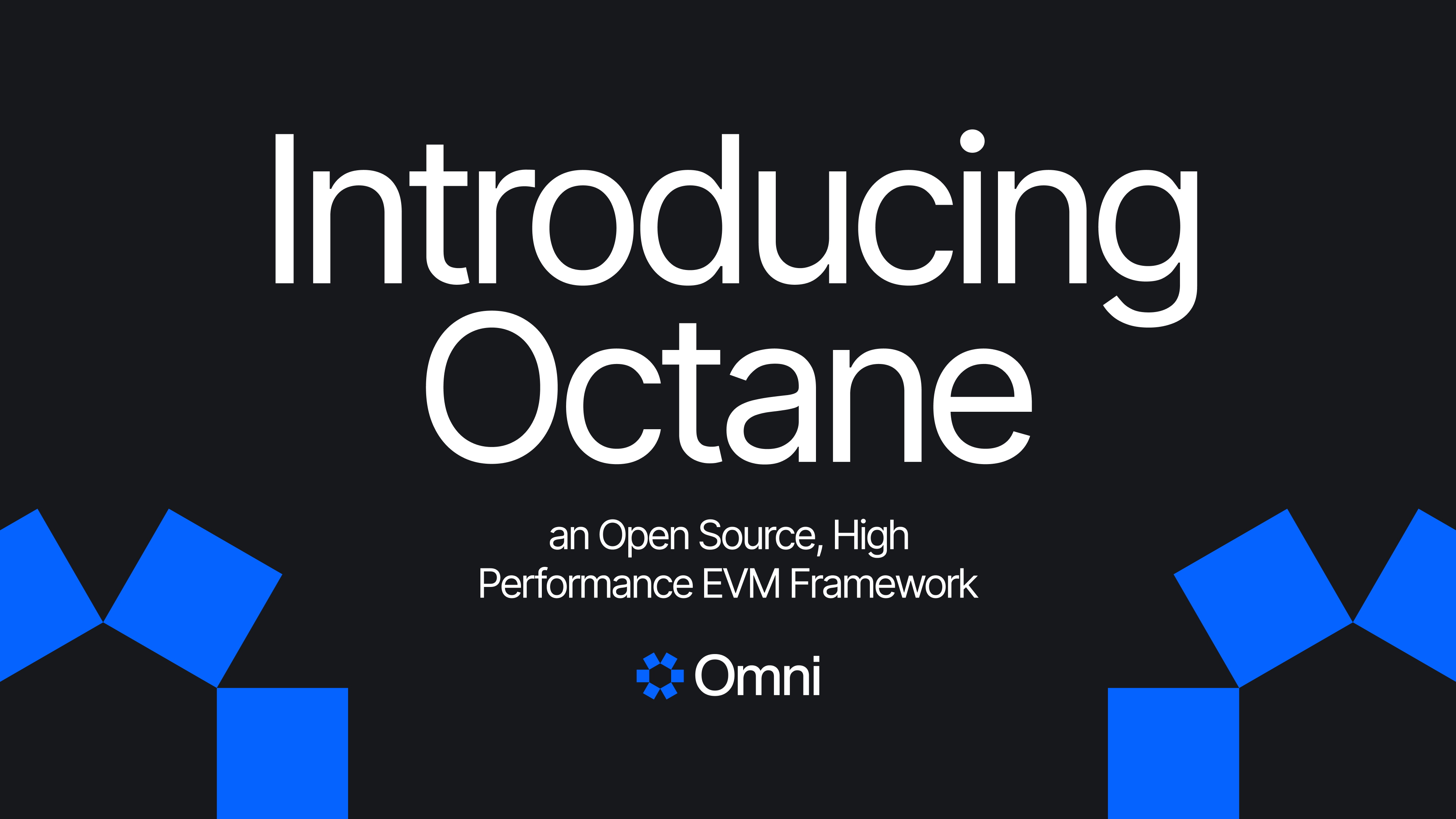Introducing Octane: an Open Source, High Performance EVM Framework

The EVM and the CometBFT (formerly Tendermint) consensus engine are two of the most widely used components of blockchain infrastructure. The EVM offers a robust ecosystem characterized by its advanced developer tooling and strong network effects while CometBFT provides blockchains with fast finality and low latency. Despite these benefits, there has never been a scalable way to combine these two technologies.
Until now.
We are thrilled to announce the launch of Omni Octane (“Octane”), an open source, modular implementation of the EVM. Octane is designed and built to simplify the integration of the EVM into any blockchain application.
The Omni blockchain uses Octane to combine the EVM with CometBFT, but any developer can leverage Octane’s modular design to combine various execution environments and consensus engines to suit their specific needs.
Octane was designed to address the scalability and maintenance issues encountered with Ethermint, the previous standard for running the EVM on CometBFT. Octane’s core innovations rely on Ethereum’s Engine API and Cosmos’ ABCI 2.0. Under the Octane framework, the Engine API separates the execution environment from the consensus engine, preventing transactions from interfering with blockchain consensus. Octane is the first consensus implementation of the EngineAPI besides Ethereum itself (the Beacon Chain). ABCI 2.0 complements the Engine API by providing a programmable interface for high-performance consensus engines like CometBFT.
Octane offers sub-second finality, RPC query latencies as low as 5 milliseconds, and extremely high transaction throughput. Similar to Omni Network’s Octane implementation, builders can use Octane to create new performance-optimized Layer 1 networks. However, Octane also presents an opportunity for Layer 2 rollups like Optimism, Arbitrum, and zkSync to implement decentralized sequencers while still maintaining the rapid confirmation speeds that users have grown accustomed to with centralized sequencers. Additionally, this opens up the opportunity to create extremely low latency and low cost experiences through combining Octane with frontier data availability networks like Celestia and EigenDA.
Octane’s modular nature allows builders to leverage cutting edge execution and consensus technologies as they are developed. The Octane framework can support any EVM client out of the box and can even be adapted to support optimized EVM implementations like Monad or alternate VM architectures like the MoveVM from Movement Labs. On the consensus side, Octane was specifically designed to support CometBFT, but it also works with other consensus engines that implement ABCI 2.0, such as Rollkit.
The Octane framework is open sourced under the GPL license for any team to launch new blockchain architectures. The only addition to the license is an “Open Interoperability Requirement” that requires projects to establish and maintain an IBC connection to the Omni Network within 90 days of production deployment. It is suggested that teams also establish additional IBC connections to other networks to prevent further ecosystem fragmentation. By open sourcing this novel framework, we hope to establish a new industry standard for running the EVM alongside fast finality consensus engines like CometBFT.
We’re excited to continue sharing more details about Omni’s implementation of Octane. We’ve learned a lot of lessons building this framework – if you’re a developer interested in using Octane for your own application, we’re here to help.

